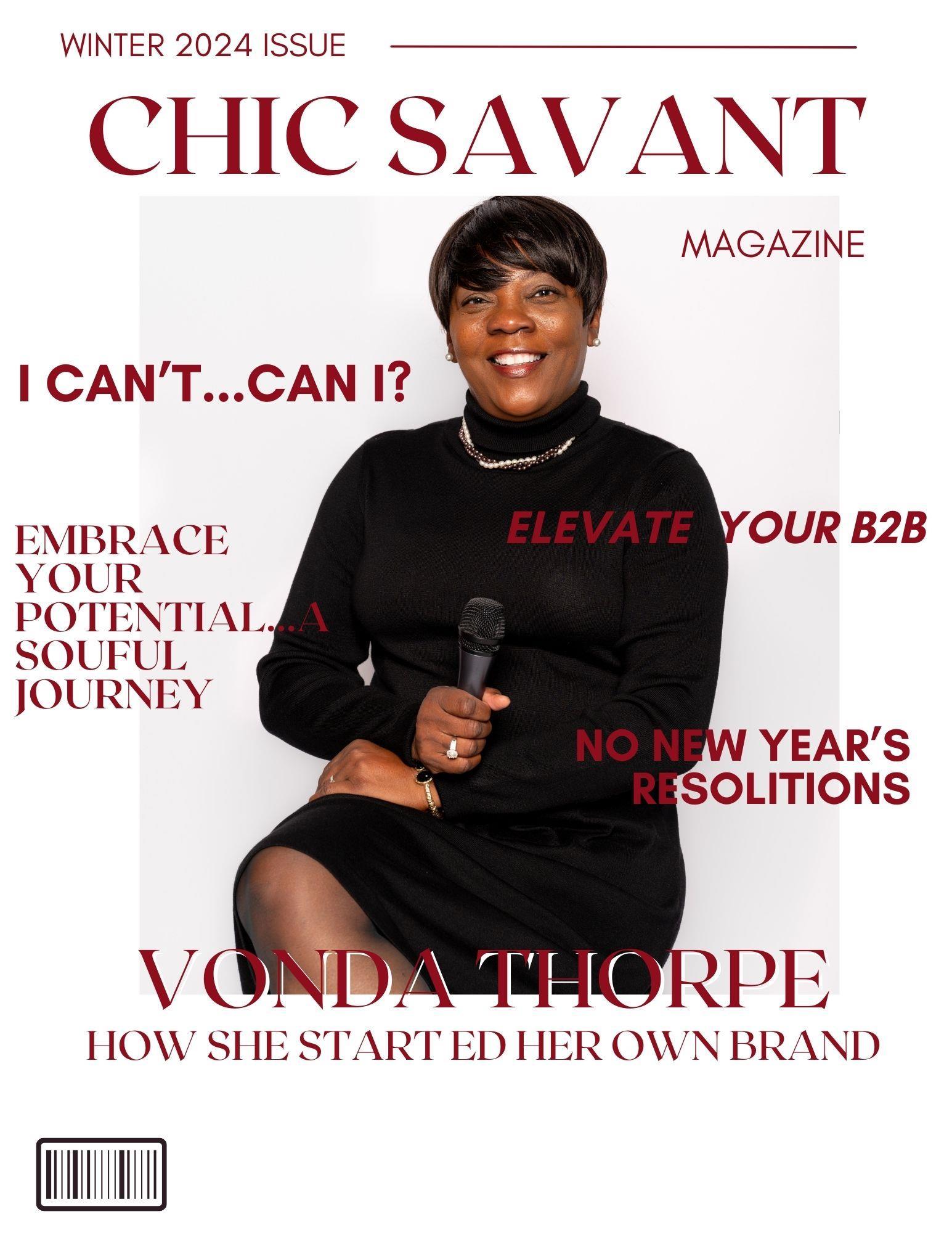
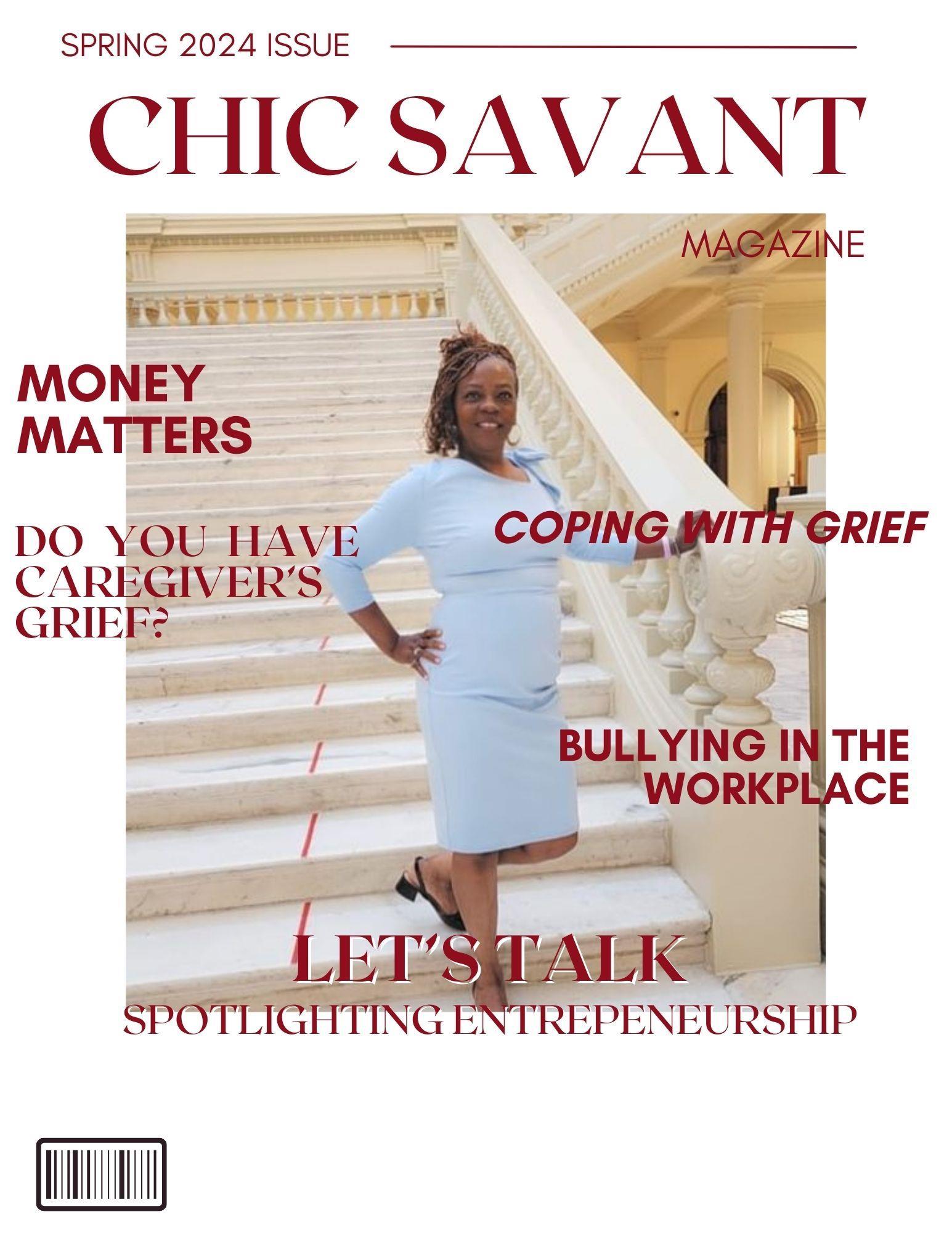
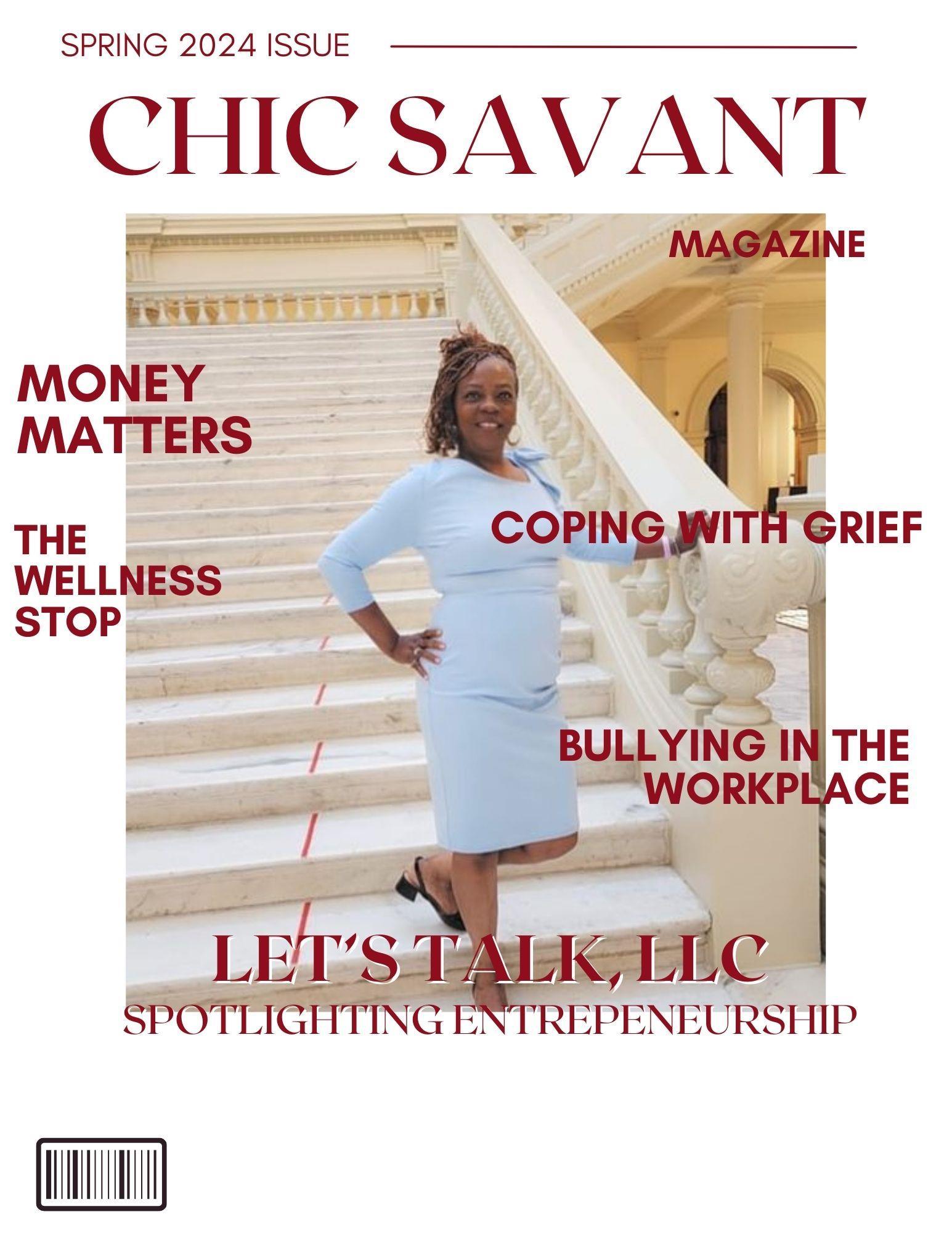
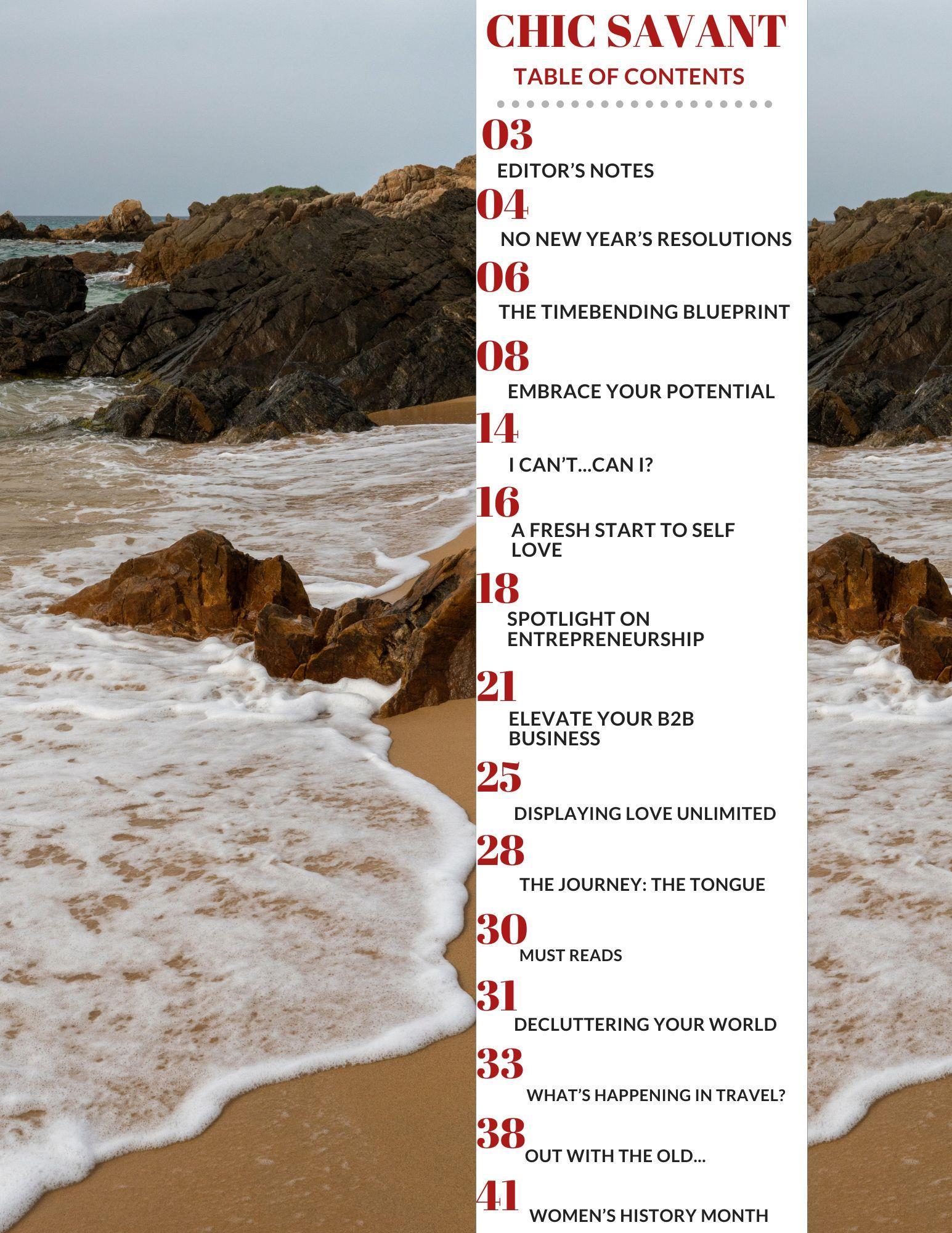
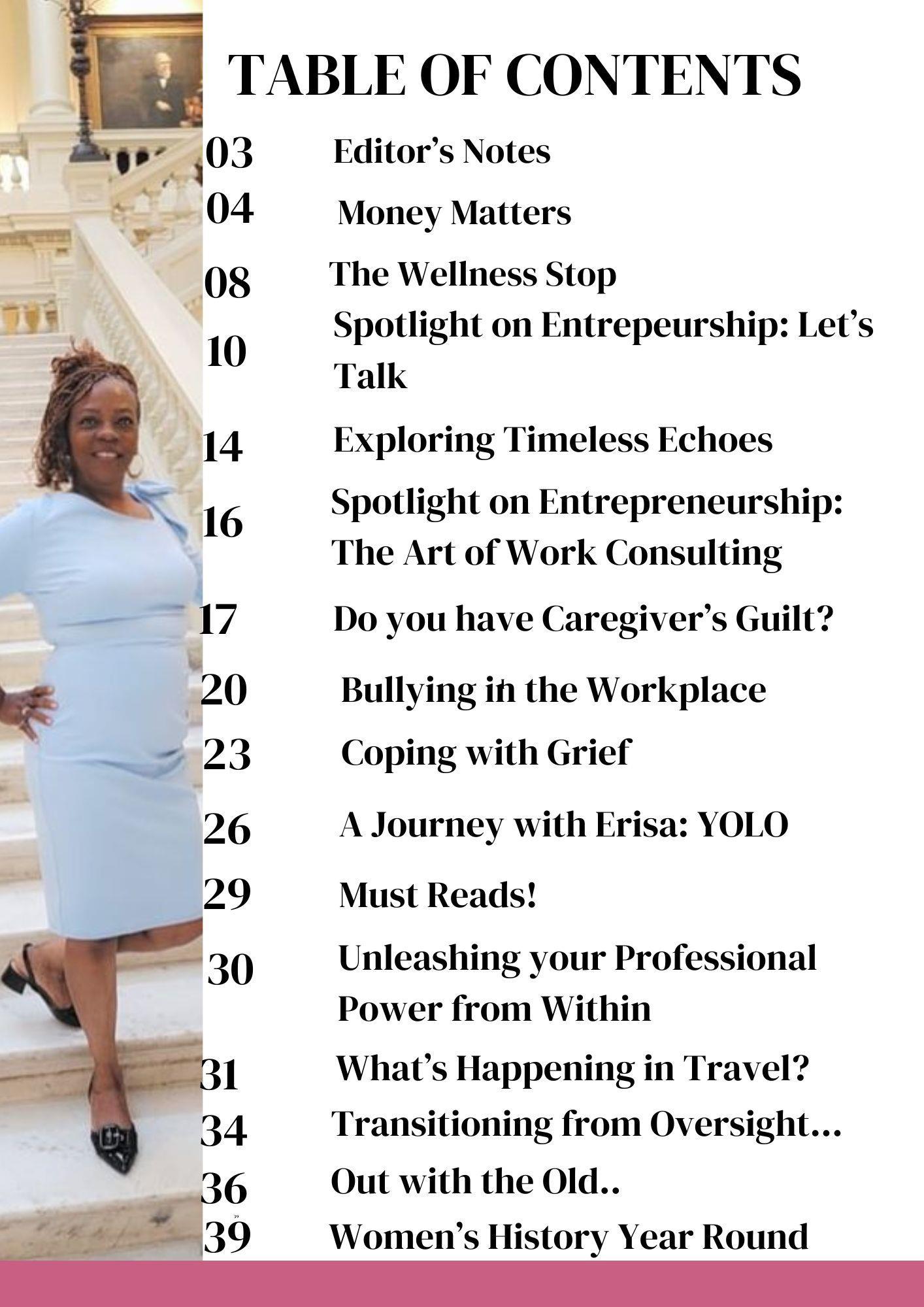
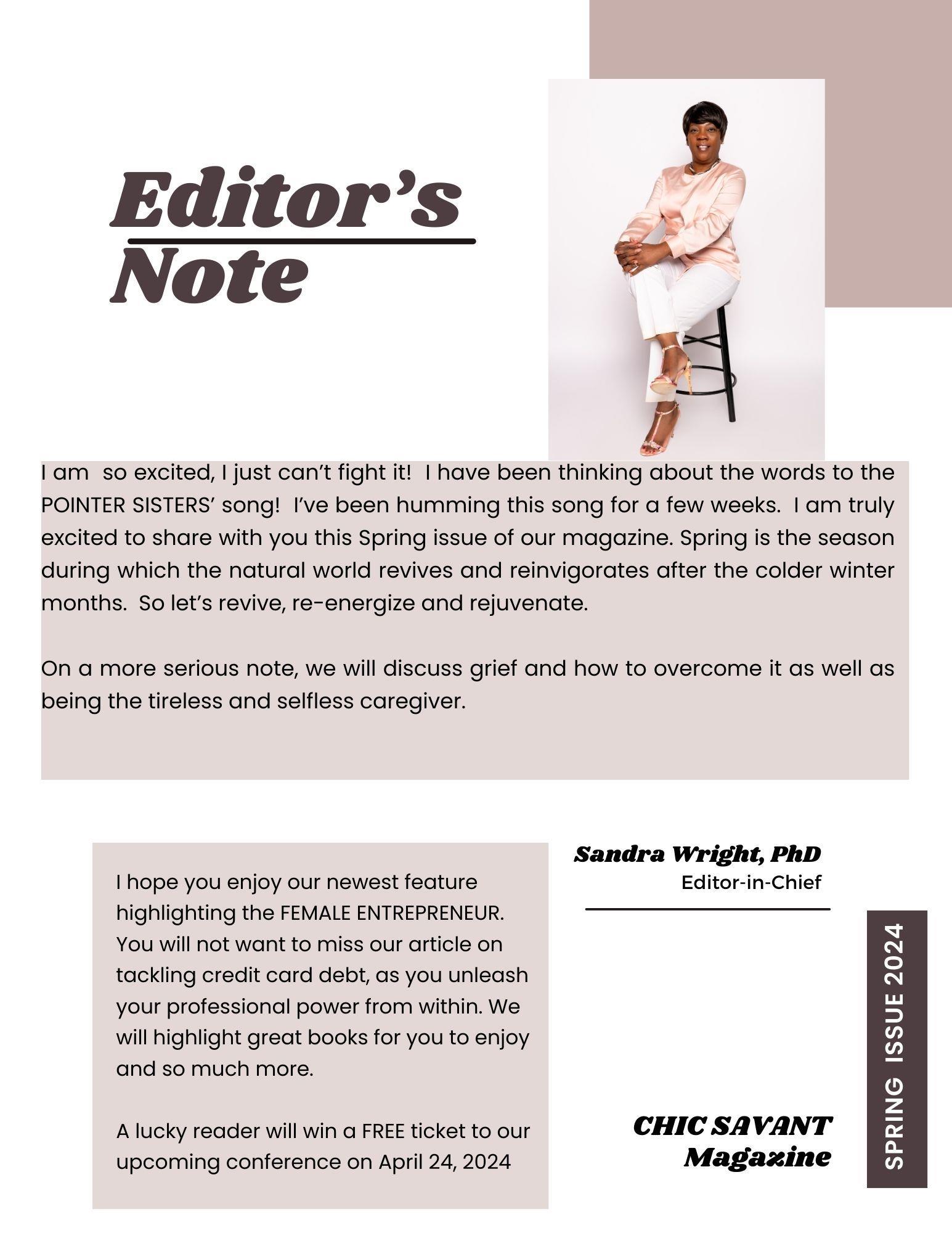

Money Matters: Attacking Credit Card Balances through debt-defying strategies
by Sandra Wright, PhD
Even though prices have risen on just about everything, Americans are racking up credit card debt at record levels, and many have high-interest rates. Credit cards can be powerful financial tools when managed wisely, but they can also lead to debt if not used responsibly. Implementing debt-defying strategies can help you take control of your credit card usage and avoid falling into debt traps
List all of your credit cards and their balances and the interest rates on each or APR. Writing down this kind of information can be truly freeing. You can actually see what you owe. For informational purposes only, let’s say you have $200.00 to spend on the following debts.
Let’s look at a quick illustration.
➢ $3,000 balance at 20 % APR, minimum payment $60.00
➢ $1,500 balance at 18 % APR, minimum payment $30.00
➢ $2,000 balance at 16 % APR, minimum payment $40.00
First, create a budgeting and tracking expense journal
• Create a Budget: Establish a monthly budget that outlines your income and expenses, including credit card payments.
• Track Spending: Monitor your credit card transactions regularly to stay aware of your spending habits and identify areas where you can cut back.
CHIC SAVANT 4
This
Photo by Unknown Author is licensed under CC BY-ND
Next, choose a debt repayment strategy that works best for you, whether it's the debt snowball method (paying off the smallest balance first). Some people call this the Low-Hanging Fruit Strategy or the debt avalanche method (paying off the highest interest rate first).
We will look at the Low-hanging Fruit Strategy first.
Low-hanging fruit. Attack the lowest debt first as you progress to the next smallest debt. The smallest balance on this illustration is $1500.00. Instead of paying 30.00, pay $100. Then pay the remaining $100.00 to cover the other bills.
The Avalanche is another strategy to ATTACK those debt-defying credit card bills. Here is how t his strategy works. Pay a little more on the credit card that has the highest interest rates. In this illustration, it is $3000 with 20% APR. By paying the minimum on the two lowest interest-rate cards, you pay the other $130 in your budget of $200 budget towards the 20% APR. Once that is paid off, focus on the next highest-interest card.
I recently did this with several credit cards. Transfer Balances: Consider transferring high-interest balances to a card with a lower interest rate or taking advantage of balance transfer offers to save on interest charges. They gave me 18 months of no wonderful interest! Consider this one ONLY if you have good credit and the cash to pay off the card during the introductory period.
Here are a few more: Negotiate lower interest rates, especially if you have good credit and have been paying on time. Avoiding Impulse Purchases. This is a hard stop, especially when you see a great sale! Don’t do it! Build an Emergency Fund, even if you have to start with a small amount.
CHIC SAVANT 5
If all else fails, explore Financial Counseling Services: If you're struggling with credit card debt or financial management, consider seeking assistance from a financial counselor or advisor who can provide personalized guidance and support.
By implementing these debt-defying credit card strategies and adopting responsible financial habits, you can take control of your finances, avoid accumulating unnecessary debt, and work towards achieving your longterm financial goals. Remember that managing credit cards effectively requires discipline, diligence, and a commitment to financial well-being. Check

out my blog: http://successisyourdestiny.blogspot.com/ Dr. Sandra Wright is the Editor-in-Chief of CHIC SAVANT Reach her at: info@sandracollinswright.com (404) 890-0028 CHIC SAVANT 6

The Wellness Stop: Taking Care of your Eyes/Glaucoma
by Dr. Sandra Wright
Glaucoma is like a silent thief especially for Black women. It’s probably the last thing on your mind. Many times, glaucoma can be heredity. The most common form of glaucoma is open-angle glaucoma. It is usually symptomless early on, which explains why a great percentage of people do not know they have it.
What is Glaucoma? It is a progressive and degenerative disease of the optic nerve. It generally happens when fluid builds up on the front part of your eye, which increase the pressure in your eye and damages the optic nerve.
In addition to race, risk factors that may increase our risk of glaucoma include being 40 or older; family history of glaucoma; high internal eye pressure; extreme nearsightedness or farsightedness; and medical conditions such as diabetes, migraines, high blood pressure and sickle cell anemia.
Here are some things to consider at the Wellness Stop for Glaucoma:
Don’t put off having an eye exam because you this it’s too costly. You may have put off an eye exam because you heard they aren’t covered by your provider. But this applies to eye exams for eyeglasses and contact lenses, which are covered separately by vision insurance. There are also no-cost and low-cost eye care programs, such as EyeCare America, which offers free comprehensive eye exams and up to one year of care to people ages 65 and older and to people at higher risk of glaucoma.
Find a qualified eye care specialist you can trust. Use your health insurance provider as a resource to find a board-certified ophthalmologist (not an optician or an optometrist) to diagnose, treat and perform surgery for glaucoma, cataracts and other eye conditions like diabetic retinopathy (an eye disease caused by diabetes).
You can still live well and prosper with glaucoma, but stay informed about the risks associated with glaucoma, its symptoms, and the importance of regular eye check-ups. If diagnosed with glaucoma, strictly follow the treatment plan prescribed by your eye care professional. This may involve eye drops, medications, or surgical interventions.
Glaucoma doesn’t mean you have to give up things you enjoy like Netflixing and chilling or reading bestsellers, which you can do by using a tablet that enables reverse polarity (white letters on a black background instead of black letters on a white background).
While there’s no strong evidence computer use is a risk factor for glaucoma the glare from the screen is one potential worry digital devices can lead to eye strain. To limit that strain, take breaks and focus on something 20 feet away for 20 seconds every 20 minutes and blink often to prevent dry eyes. Personally, I use blue glasses to look at my computer screen.
You might be able to keep on trucking, too. Similar to people who have cataracts, some drivers with glaucoma report they have difficulty with glare, night driving, and low contrast situations, but can still drive safely by take extra care to scan the visual environment. However, if you sense vision impairment is affecting your road skills, ask a friend or family member to ride with you to assess your driving.
CHIC SAVANT 8
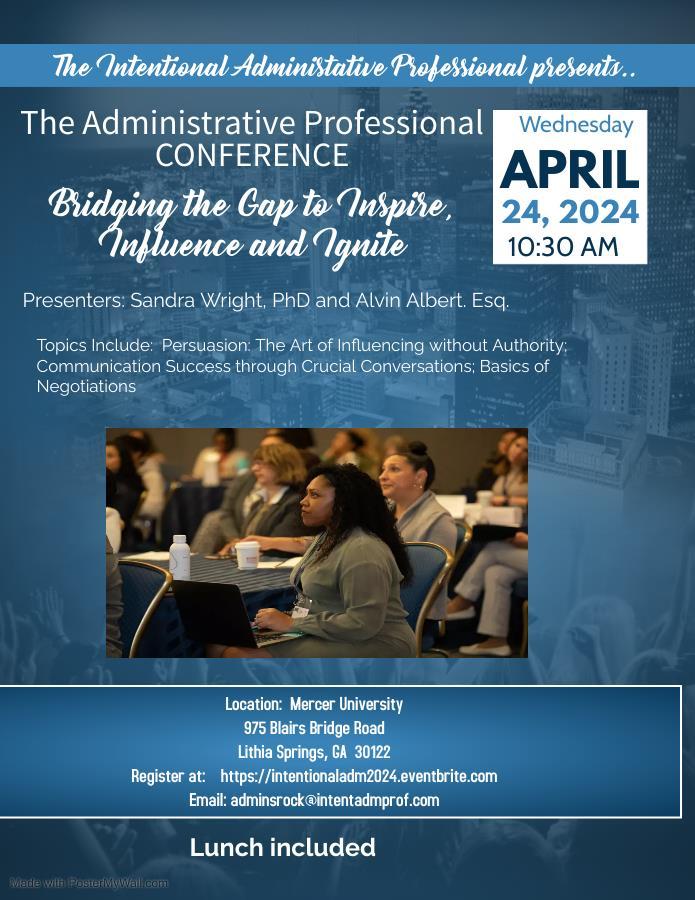
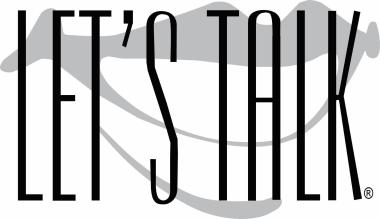
Spotlight on Entrepreneurship: Rhonda Hight of Let’s Talk, LLC
By Dr. Sandra Wright
Rhonda C. Hight is a human resources training consultant, author, and registered corporate coach who works with organizations to design & deliver experiential training programs; support the human resources function and provide business coaching services for individual leaders and teams. A subject matter expert in the areas of Diversity, Equity and Inclusion, Sexual Harassment, Leadership Development, and Interpersonal Communication Skills, she has facilitated learning events throughout the United States and internationally.
The “sweet spot” for me is having a career that allows me to be both teacher and student; gleaning new insights from authentic dialogue & interactive exercises with my participants, while sharing knowledge and innovative tools designed to ignite thought, and influence behavioral change.
I officially founded Let’s Talk, LLC in 1993 while employed with The CocaCola Company, two years later I began working in my business full-time. Active participation in Coke’s Toastmasters Club, and stretch assignments in Human Resources & Operations, helped develop my emotional intelligence, leadership, presentation, project management, and communication skills.
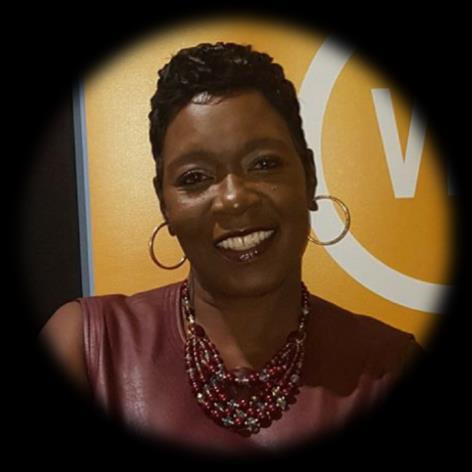
I’ll always have a special place in my heart for Toastmasters International. Something that started as a hobby, and a way to build connections with people in my newly adopted hometown; became the catalyst for amalgamating my gift for teaching with my passion for making a difference. It is what fuels my desire to help “take careers and businesses to new heights!”
Whether I’m working as a sole-practitioner, or leading a collaborative team comprised of colleagues with various expertise; the goal is always about creating a learning strategy that encompasses my client’s culture, values, and skill development needs, in an engaging and thought-provoking way.
For over 20 years, we’ve served Fortune 500 companies, small business, government and non-profit agencies. As an HR Consultant, my expertise includes employee relations, learning and organizational development, platformspeaking, and group/individual coaching. One of the first business books I read from cover to cover after officially launching my business was The Personal Touch: What You Really Need to Succeed in Today’s Fast Paced Business World, by Terrie Williams. It was inspiring and full of wisdom and creative ideas. I’ve applied her blueprint with my experiences and the wisdom gleaned from them, to provide our clients with a personal touch.
CHIC SAVANT 10
Her company’s slogan is ”Committed to taking your business or career to new heights”
She considers herself a “self-professed” overachiever and relentless seeker of knowledge. She has appeared as a guest on local radio and television talk shows; won numerous speech awards; and formerly co-produced and co-hosted Dialogue in Motion, a lifestyles and current events radio talk show.
She was named by Steed Media Group as one of “Atlanta’s 25 Most Influential Women.” A published author, her first book, “Take the Lessons and Leave the Baggage ~ Stories of a Solopreneur; is an inspirational and informative read for individuals interested in, or already pursuing entrepreneurship.
An Alumna of United Way’s Volunteer Involvement Program; and Member of the National Association of African Americans in Human Resources – Atlanta Chapter; where she previously held board positions, and co-chaired the Consultant’s Coalition, a mastermind group for independent human resources consultants. Rhonda currently serves on the board of directors for Caring Works.
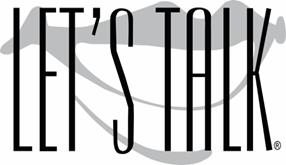
She can be reached at
Rhonda C. Hight (she/her/hers)
Principal, Let's Talk LLC (678) 593-5578
www.Letstalkllc.com
CHIC SAVANT 11

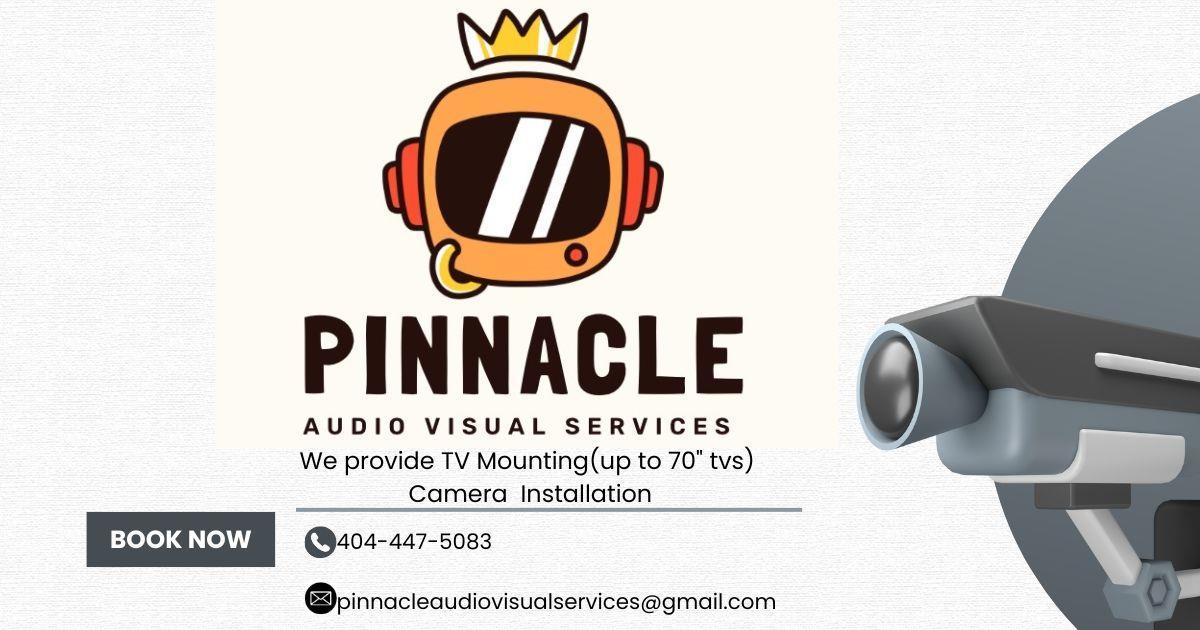
Exploring the Timeless Echoes: The Jazz Journeys of Hazel Scott and Selena
by Danielle Johnson
I am a lover of music and thought it would be fitting to explore the greatness of two amazing legends for Women’s History Month. In the vibrant tapestry of music history, certain individuals leave indelible marks, weaving their melodies into the fabric of our cultural consciousness. Two such luminaries, jazz pianist and singer Hazel Scott and the incomparable Selena, stand as pillars in their respective realms, enriching the world with their unique voices and musical legacies. Though from different eras and genres, their stories intertwine through the universal language of music, bridging generations and captivating audiences worldwide.
Hazel Scott Born in the hallowed streets of New Orleans, Hazel Scott emerged as a prodigious talent, her fingers dancing effortlessly across the ivories from an early age. Raised in a household steeped in jazz, her musical journey began with the rich heritage of the genre pulsating through her veins. Inspired by the likes of Duke Ellington and Thelonious Monk, Scott carved her own niche, infusing traditional jazz with her distinct flair.
Scott's prowess as both a pianist and vocalist set her apart in a male-dominated industry. With each note she struck and each lyric she crooned, she transported audiences to smoky jazz clubs and moonlit ballrooms, where the music flowed like fine wine. Her improvisational skills were legendary, transforming every performance into a journey of sonic exploration.
Despite her undeniable talent, Scott's path to success was fraught with challenges. In an era marked by racial segregation and discrimination, she faced barriers that threatened to stifle her artistry. Yet, with unwavering determination, she shattered those barriers, blazing a trail for future generations of jazz musicians.
Scott's discography is a testament to her musical prowess, with albums like "Midnight Serenade" and "Soulful Reverie" garnering critical acclaim. Each composition was a mosaic of emotion, with Scott's velvety voice and intricate piano arrangements painting vivid portraits of love, loss, and everything in between.
Beyond her musical contributions, Scott was a beacon of inspiration, using her platform to advocate for social change. Whether through benefit concerts or impassioned speeches, she championed causes close to her heart, leaving an indelible mark on both the music industry and society at large.
Though she may have left this world, Scott's legacy endures, her music serving as a timeless reminder of the power of art to transcend boundaries and unite humanity in harmony.
Selena: The Queen of Tejano Music
In a sun-drenched corner of Texas, another musical luminary was born a young girl with a voice that would captivate the hearts of millions. Selena QuintanillaPérez, known simply as Selena, rose from humble beginnings to become a global icon, leaving an indelible imprint on the world of music.


CHIC SAVANT 14
Raised in a musical family, Selena's journey began at an early age, performing with her siblings in their family band, Selena y Los Dinos. Blessed with a voice that radiated warmth and soul, she quickly became the group's shining star, captivating audiences with her electrifying stage presence and infectious energy.
Selena's breakthrough came with the rise of Tejano music, a fusion of traditional Mexican folk music with elements of pop, rock, and country. With her unparalleled vocal talent and charismatic persona, she became the genre's undisputed queen, breaking down barriers and paving the way for future Latinx artists.
Her album "Entre a Mi Mundo" catapulted her to stardom, earning her widespread acclaim and a devoted fan base. Songs like "Como la Flor" and "Bidi Bidi Bom Bom" became anthems of empowerment and resilience, resonating with audiences across cultural divides.
Yet, Selena's legacy extends beyond her musical achievements. She was a trailblazer, shattering stereotypes, and challenging conventions at every turn. As a Latina woman in a maledominated industry, she faced her share of adversity, but she refused to be silenced, using her platform to uplift her community and advocate for equality.
Tragically, Selena's life was cut short at the peak of her career, but her spirit lives on through her music and the countless lives she touched. Her influence can be felt in every corner of the music world, from pop to Latin to beyond, a testament to the enduring power of her legacy.
The Intersection of Legacies
Though their paths may have never crossed in life, Hazel Schott and Selena share a common bond through their love of music and their enduring impact on the world. Both women defied expectations and blazed trails in their respective genres, leaving behind a legacy that continues to inspire and resonate with audiences today.
Their stories serve as a reminder of the transformative power of music to uplift, to unite, and to transcend barriers of race, gender, and culture. In a world often divided, their melodies offer a glimpse of unity, reminding us of our shared humanity and the universal language that connects us all.
As we celebrate the legacies of Hazel Schott and Selena, let us not only honor their contributions to the world of music but also carry forward their spirit of resilience, passion, and unyielding determination. For in their melodies, we find echoes of our own journeys, weaving together the rich tapestry of the human experience in all its beauty and complexity. As women let us continue to celebrate and uplift each other always.
by Danielle Johnson Creator/ Entrepreneur
CHIC SAVANT 15

Spotlight on Entrepreneurship: Elizabeth Moliter and Art of Work Consulting LLC
by Dr. Sandra Wright
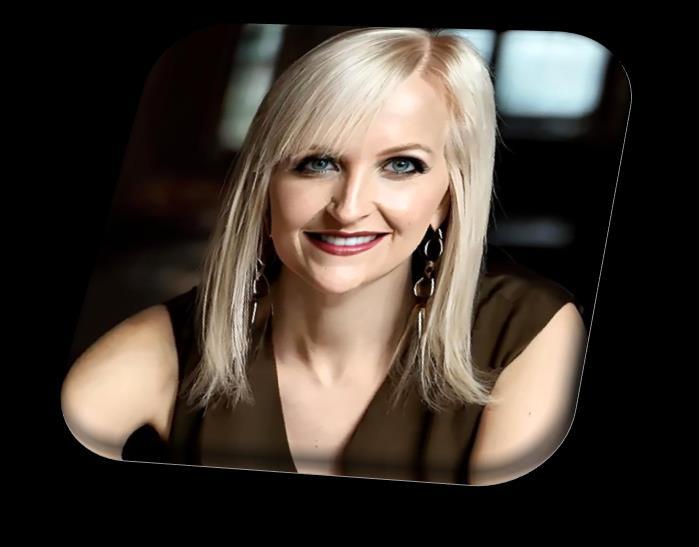
Elizabeth Moliter is Principal Consultant and Owner at Art of Work Consulting LLC, a business consulting and coaching firm. Elizabeth comes with decades of experience as an executive in the business world across a range of industries, most notably staffing and recruiting and real estate. She blends her business acumen with concepts and approaches gleaned from her work in the arts as a musician and performer and from her study of organizational leadership through the Masters of Human Dimensions of Organizations program at University of Texas, Austin, where she earned her degree in 2017 and currently serves on the Advisory Board. This combination allows her to provide a unique approach and perspective to her firm’s clients.
As a business professional, Elizabeth worked as a Recruiter and Trainer, and also as Sales Director for several real estate development projects in Austin’s urban core. She eventually took a position with a large non-profit staffing firm where she worked for over 10 years. It was her dream job, leading teams and working with individuals with disabilities to help them find professional work in the public sector. In this role, she brought her empathetic nature as well as her strategic intuition and became a mentor and coach to her employees and a valued member of the executive team.
In 2021 and early 2022, she chose to leave this organization, and after a few months of soulsearching, opened her solo consulting practice, Art of Work Consulting LLC. She has never looked back.
This practice offers coaching and consultative services for individuals, teams, and organizations. All services are customized, but include seminars, one-on-one or group coaching sessions for professionals and job seekers; teambuilding sessions; and, leadership training and development for managers and executives. Through her programs she provides mentorship, accountability, and strategies to help her clients achieve their aspirational goals, increase productivity, and harmonize relationships, while also finding balance, purpose, and joy in their lives.
Since its inception, Art of Work Consulting has been engaged by new and seasoned executives and entrepreneurs to conduct specialized projects, support strategic initiatives, and solve issues related to employee engagement and productivity.
CHIC SAVANT 16
The work with these leaders often involves taking a deep dive into their values and mission – both personal and collective – in an effort to energize their operations, manage growth, build trust with their employees, and define the direction of the organization.
Elizabeth’s work with job seekers to build or redesign their resumes and/or assist them with their career goals led one client to remark enthusiastically that her services provide “a supportive ear, someone to orient a sometimesoverwhelming conversation to measurable steps, and/or a co-creator of an authentic and strong resume!!”
Elizabeth has served in a leadership capacity on several boards, appeared on panels and given talks to large and small organizations, and job seeker groups. She has authored many articles and has been interviewed for publications, and podcasts. She also writes a blog which can be found at https://artofworkconsulting.com/blog/

You can reach Elizabeth at elizabeth@artofworkconsulting.com or learn more about the services her firm provides by visiting www.artofworkconsulting.com.
CHIC SAVANT 17
DO YOU HAVE CAREGIVERS’GUILT?
By Doris Dickerson
I was recently a co-caregiver. However, I was the main one that was the caregiver of my sister. My sister was too much to handle, and her son didn’t help that much. I had to rearrange my schedule and many times I had to get my husband to help instead of her son.
We as Black women beholden to gender, racial and ethnic conditioning about the role of caregiver are often expected to carry on legacies of caring for loved ones.
Navigating the complexities of caregiving while balancing our own professional and social lives can also engender what’s called caregiver guilt. Caregivers experience this distinct type of guilt when we believe we aren’t doing enough for our loved one and we regret taking time to focus on ourselves. This guilt often compounds the existing stress of caregiving and can complicate the relationship with our loved one.
Eventually, my sister’s son stopped helping, and I had to enlist the full-time help of my husband. I was really tired and could not do much of anything. The guilt really started to set-in as well as the anger. Who was I angry with? Was I angry with myself, my sister or her son? I suddenly realized I was angry at all three. I was angry with my sister because she would not listen to me and got herself into the situation that she was in at the time. Angrier at her son because he dropped his mother in my lap and took off.
When I am aware that I’m feeling guilty, I check in and ask myself: “What exactly do I feel guilty about?” After authentically reflecting on my responses, I write down why I believe I’m feeling guilty. At different times I have discovered the guilt was rooted in my beliefs that I have to be the perfect sister and caregiver; I am the only person who can ensure all of my sister’s needs are met; and that my sister’s needs should always be prioritized over my own. These personal check-ins allow me to examine the situation, interrogate the validity of the thoughts and their impact on my mental health, and form new beliefs that illuminate the positive aspect and quiet the negative thoughts.
The caregiving journey has changed my life, and my own experiences have made me that much more present and empathetic to the people I work with. When people trust me enough to share their experiences of caregiver guilt and burnout, I offer support and resources accompanied by an assurance that I understand their plight based on my own lived experience. You may not always be able to prevent guilt about the intersection of your caregiving responsibilities and your personal and professional life. It’s ok to fail sometimes. I had to remember that, and I want you to remember that, too. But leaning into these restorative practices –and showing yourself some grace – can make all the difference.
CHIC SAVANT 18
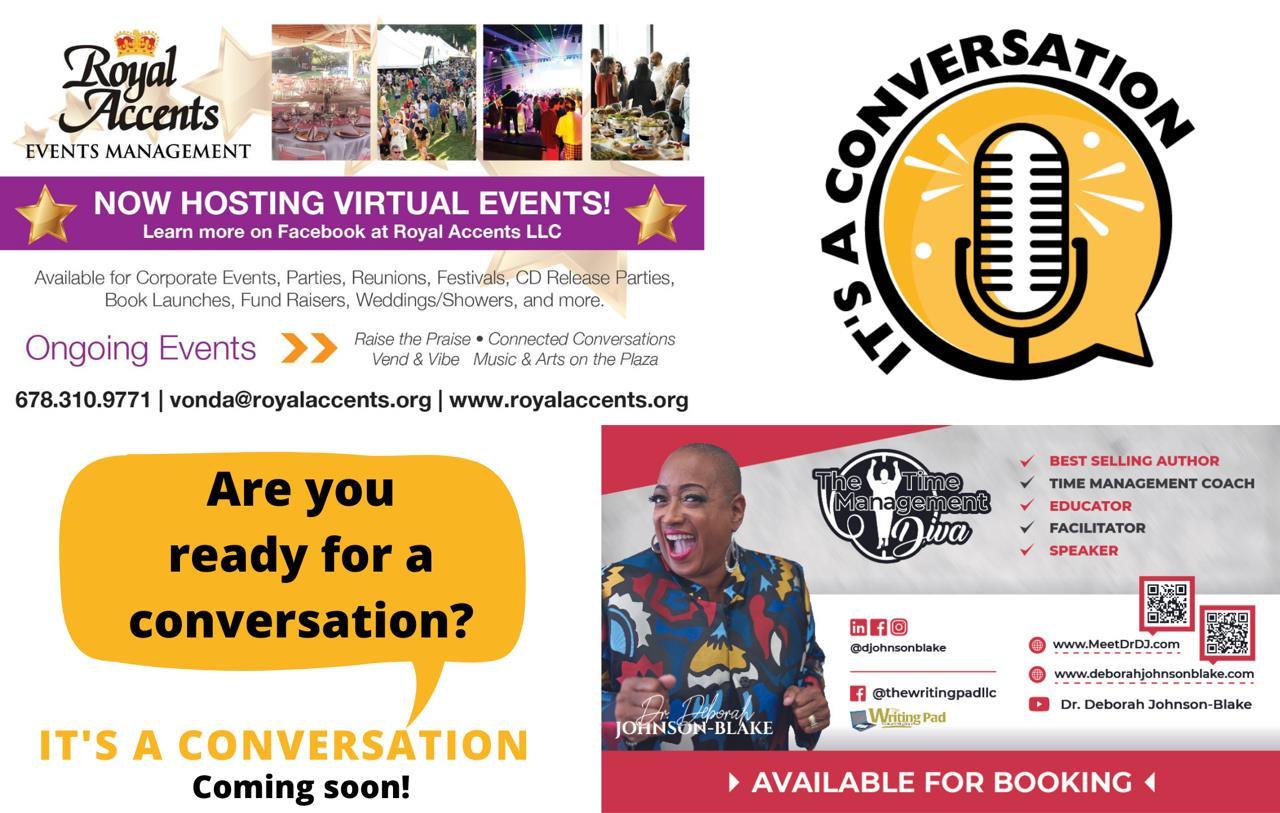
Bullying in the Workplace: Strategies for Prevention and Intervention
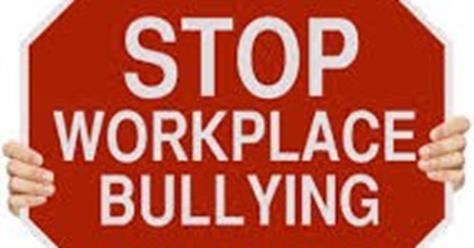 by Dr. Sandra Wright
by Dr. Sandra Wright
Impact on Individuals and Organizations:
Bullying is not confined to schoolyards; it extends its insidious reach into the workplace, where adults are not immune to its harmful effects. In recent years, there has been a growing recognition of workplace bullying as a serious issue that can have profound consequences for both individuals and organizations. From undermining morale and productivity to causing emotional distress and even physical harm, bullying in the workplace can manifest in various forms, including verbal abuse, intimidation, exclusion, and sabotage.
Identifying Workplace Bullying:
The first step in addressing workplace bullying is recognizing its existence. Often, bullying behavior may be subtle or disguised as managerial style, making it challenging to detect. However, common signs of workplace bullying include:
Persistent Criticism: Regularly singling out an employee for unwarranted criticism or belittling their efforts in front of colleagues. Isolation and Exclusion: Intentionally excluding an employee from meetings, social gatherings, or important communication channels, leading to feelings of ostracism. Verbal Abuse: Using derogatory language, insults, or threats to intimidate or control others.
Undermining Work: Deliberately sabotaging an employee's work, spreading rumors, or withholding critical information to undermine their performance.
The consequences of workplace bullying are farreaching and detrimental to both individuals and organizations. For targets of bullying, the experience can result in heightened stress, anxiety, depression, and even post-traumatic stress disorder (PTSD). Victims may also suffer from decreased job satisfaction, lower self-esteem, and impaired performance, ultimately affecting their career progression and personal well-being.
From an organizational perspective, workplace bullying can lead to increased absenteeism, higher turnover rates, and reduced productivity. Moreover, it tarnishes the company's reputation, fosters a toxic work culture, and undermines employee morale and engagement. Left unchecked, bullying behavior can escalate, creating a hostile work environment that permeates throughout the organization.
Preventive Measures: To effectively address workplace bullying, organizations must prioritize prevention and create a culture of respect and inclusivity. Some key preventive measures include:
Clear Policies and Procedures: Establish comprehensive anti-bullying policies that clearly define unacceptable behavior and outline procedures for reporting and addressing incidents of bullying.
Training and Awareness Programs: Provide regular training sessions to educate employees and managers about the signs of bullying, its impact, and their roles and responsibilities in preventing and addressing it.
Promote a Positive Work Culture: Foster a culture of respect, empathy, and open communication where differences are valued, and conflicts are resolved constructively.
CHIC SAVANT 20
Lead by Example: Senior leaders and managers should model respectful behavior and intervene promptly when they observe or are made aware of bullying incidents.
Intervention and Support: In addition to prevention, it is crucial to have mechanisms in place for intervening in cases of workplace bullying and providing support to affected individuals.
This may involve:
Prompt Investigation: Take all reports of bullying seriously and conduct thorough, impartial investigations to gather evidence and determine appropriate actions.
Support Services: Offer confidential counseling, coaching, or mediation services to employees who have experienced bullying to help them cope with the emotional and psychological impact.
Disciplinary Action: Hold perpetrators of bullying accountable for their actions through disciplinary measures, up to and including termination, if warranted by the severity of the behavior.
Follow-Up and Monitoring: Monitor the effectiveness of interventions and provide ongoing support to both the target and perpetrator to ensure that the behavior does not recur.
Building a Bully-Free Workplace:
Creating a workplace free from bullying requires a concerted effort from all levels of the organization. By promoting a culture of respect, fostering open communication, and implementing robust policies and procedures, organizations can create an environment where employees feel safe, valued, and empowered to speak out against bullying behavior. Ultimately, addressing workplace bullying is not just a moral imperative but also a strategic investment in the well-being and success of both individuals and the organization as a whole.

CHIC SAVANT 21


COPING WITH GRIEF
By Jannie Edwards
Coping with “Grief” can be different for everyone. The words in this article are from my heart and based on personal experiences. I think the loss of someone connected by the umbilical cord goes deep. I experienced loss of a dear grandmother, grandfather, 61-year-old mother, aunts, siblings, cousins, and friends. The deepest loss that I experienced was my son and my husband of twenty-five years.
Grief can feel overwhelming and allencompassing; however, there are coping strategies that can help individuals navigate this difficult terrain:
Acknowledge and Express Emotions: Allow yourself to feel and express whatever emotions arise, whether it is sadness, anger, guilt, or relief. Suppressing or denying these feelings can prolong the grieving process and impede healing.
Seek Support: Reach out to friends, family members, or support groups who can offer empathy, understanding, and companionship during this challenging time. Talking openly about your feelings can provide comfort and validation.
Practice Self-Care: Take care of your physical, emotional, and mental well-being by prioritizing activities that nourish and replenish you. This may include exercise, meditation, journaling, or spending time in nature.
Create Rituals and Memorials: Honor the memory of your loved one by creating rituals or memorials that hold special meaning for you. This could involve lighting candles, planting a tree, or creating a scrapbook of cherished memories.
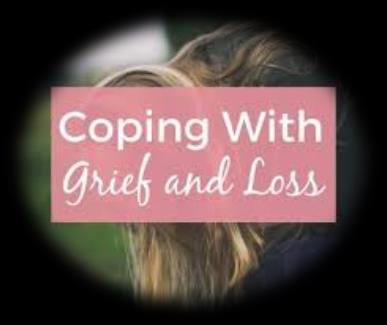
Set Realistic Expectations: Be patient and gentle with yourself as you navigate the grieving process. Understand that healing takes time and that there is no "right" way to grieve.
My grandparents died one month apart. Grandma was the confidant who listened to my disagreements with my mother. In other words, I told on my mother to her mother. It was very difficult dealing with their loss. I often picked up the phone to call and remembered that neither of them was there to answer.
My mother was only sixty-one years old when she died. She retired early in February and died in March. I felt as if my heart was ripped from my chest while I yet walked around. I felt that I was cheated. I wanted her to visit me in Chicago but that was not going to happen. I started praying more and asking God to deliver me from this pain and it worked. My mother was instrumental in assisting me with coping with my grief after losing my grandparents.
I had two more mothers who were my aunts. They nurtured and helped raise me as if they were an extension of my mother. My oldest aunt had terminal cancer and it was inevitable that she would not be around a very long time. I was not as angry with the world, but it was a great loss, and I cry each time I think of them.
CHIC SAVANT 23
I realized that I still had a lot of them in my heart from memories. The great times were still with me as well as the punishments. Life goes on is a true statement and I had to create ways to incorporate ways to honor my loved ones.
I lost a friend in the past year that took me through a lot of different emotions affiliated with grief. I often wondered why I did not visit her as much. After a period of time, I forced myself to get over the anger and thinking that I could have done something to prevent her death and lengthen her life. I had to realize the truth that I did not neglect her. I could not have done more and stopped being angry with myself. The words say to be absent from the body is to be present with the Lord. I also lost two brothers that sandwiched me. I miss them and will think of them for the rest of my life because they were there when I was growing up. I had realized that there is a correct way to grieve and remember my brothers. I also lost my husband, and he was often in pain before his transition. My oldest grandson performed a praise dance at his funeral when he was seven years old. I often remember the good times and as I keep healing.
The loss of my son was by far the worst grief imaginable. He was a good guy and loved people. He did not meet strangers and used the phone on a regular basis. He was in and out of the hospital a lot during his childhood. The doctors said he would not live past fourteen years old. Well, God gave him to me for twenty-nine years
I deal with his loss by remembering that God gave me fifteen more years longer to be with me.
While grief may never fully go away, over time, it can transform into a more manageable and integrated part of one's life. Healing from grief does not mean forgetting or moving on from the loss but rather finding ways to live with it and incorporate it into your identity. It is possible to find meaning, growth, and even moments of joy amidst the pain of grief.
It is especially important to learn how to manage grief. Feelings of joy help with coping when our lives are invaded by this thief. Belief in God helps control our emotions and gives up hope when we will suffer a loss. As we continue to learn how to navigate the process and keep on living, loss can be easier managed if realize the importance of loving and forgiving. When a loved one leaves consider replenishing our minds when they are gone to rest. Loved ones did not leave us here to grieve, but to nourish our minds and be our best.
Navigating grief is a deeply personal journey that requires patience, self-compassion, and support from others. By acknowledging and expressing emotions, seeking support, practicing self-care, and accessing professional resources when needed, individuals can find a path toward healing and eventual acceptance of their loss. Remember, you are not alone in your grief, and there is hope for brighter days ahead.
My family and I are still healing as we sponsor a three-day celebration of their lives each Memorial Day weekend in May. Family and friends gather and discuss memories of our loved ones and remember the happy times.
CHIC
24
SAVANT

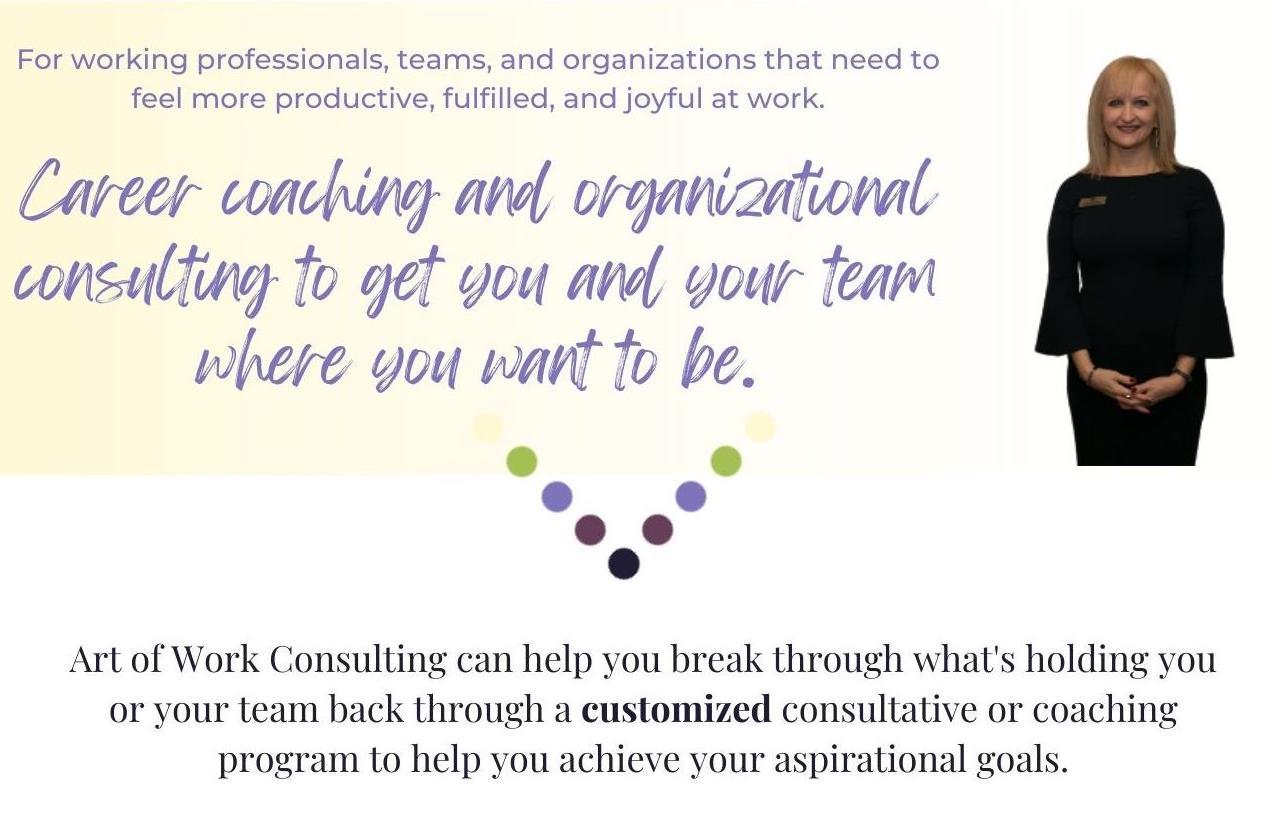
Elizabeth Moliter, MA, Principal Consultant www.artofworkconsulting.com 512.643.2710

A Journey with Erisa “YOLO”
by Erisa Martin
In the picture above I stand a glow achieving part of a childhood dream, to hold a monkey, the total dream, to own one. After a couple of pictures, I was glad to give him back seeing what my childhood eyes didn’t see… another responsibility.
I was prompted to initiate this experience by the following phrase, “You only live once, abbreviation YOLO. I’d like to propose it as a mantra to all selfless women who may feel a need to justify celebrating themselves also known as the wellness term self-care.
Likewise, I would like to pose a few questions that I asked myself, “Why is it important to celebrate yourself? How should you celebrate yourself? When should you celebrate yourself
Let’s set off on this introspective journey. As I prepared to write this article I interviewed a few women in varying age brackets, asking them the following series of questions? “ Do you need a reason to celebrate yourself? Why or why not? Did you have a someone who modeled selfcare routines while growing up? The majority of the women, from my small cohort, acknowledged that they didn't feel the need to have a reason to celebrate themselves, but realized motherhood and their innate nurturing tendencies caused them to put themselves on the back burner during the formative years of their children's lives.
A mindset shift occurred as their children became self-sufficient. Most acknowledged that they had selfless women role models although some mentioned women who modeled carving out time for themselves while caring for others.
On the other hand there were some women who were adamant and unapologetic about celebrating themselves through every season of their lives.This self-empowered stance mirrored the response of a psychologist in a recent article I read entitled,” 5 Types of Self-Care for Every Area of Your Life How are you caring for yourself today? By Elizabeth Scott, PhD. A contributor in the article stated,
According to Sabrina Romanoff, PsyD “Self-care is important because it helps re-establish balance and avoid burnout. It is often the mechanism of recalibrating and getting in touch with our ability to play, have fun, relax, and connect.”
Why Celebrate Yourself?
Psychologist Romanoff’s statement rests on a foundation of establishing balance. The “ why” behind celebrating oneself is that it brings balance to your world. This starts first in your mind where self-esteem resides. This feeling of pride and self worth says, “ I am worthy of celebration because of my very existence. I add value to the earth. I am my own advocate therefore ultimately it is my responsibility to myself to care for me.”
CHIC SAVANT 26
How can I celebrate myself?
Your celebration will be unique to you and will be impacted by the amount of time, resources and often how well you know yourself. Sometimes not knowing what to do can be a roadblock in itself, but some ideas include bubble baths, lunch with a girlfriend, making a desired purchase, regular hair or nail appointments in a shop or your bathroom, positive self-talk , reflective journaling or even annual trips. It is vital that our celebrations are about us and not tainted with images of how other people celebrate.
When can I celebrate myself?
Time waits for no one so it is important that you are intentional about carving out times in your day or week to celebrate yourself. Establishing a routine is most important so you aren’t overlooked.
As the word celebration kept playing in my head a Kool & The Gang song entitled, “Celebration” came to mind. Your celebration of yourself may include others or be by yourself, but the vibe is one of excitement. I would suggest you adopt this song and the “YOLO,” mantra. In one of the verses it simply says, “ It’s time to come together, it’s up to you, what’s your pleasure? Everyone around the world, come on!” A movement is being unearthed in the selfless community won’t you join it for, “You only live once!”
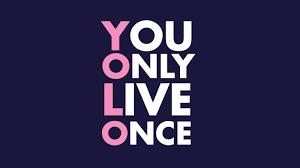
CHIC SAVANT 27
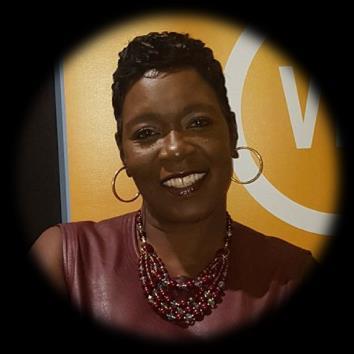
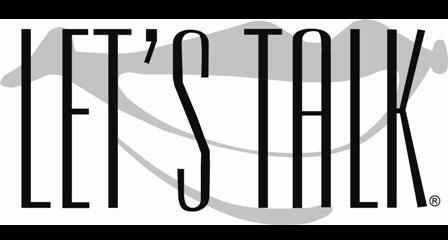
I’m Rhonda C. Hight, founder of Let’s Talk, LLC, an Atlanta-based boutique human resources consulting firm. Let’s Talk, LLC specializes in innovative, educational, and emotionally intelligent presentations, training programs, and coaching services designed to take your career or business to new heights! Contact me for an exploratory chat, and Let’s Talk! •404-212-0239 •rhonda@letstalkllc.com CHIC SAVANT 28
ARE YOU READY TO TAKE YOUR BUSINESS TO NEW HEIGHTS?

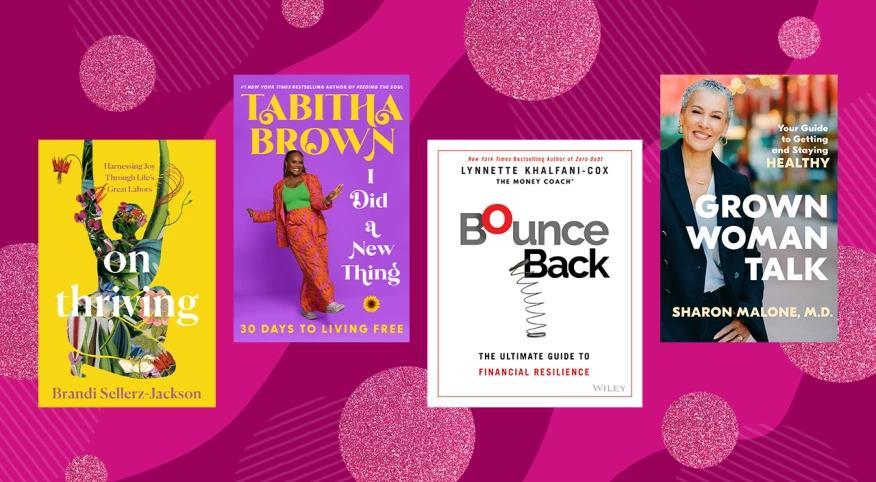
UNLEASHING YOUR PROFESSIONALPOWER FROM WITHIN!
By Dr. Sandra Wright
Do you feel that you are on the verge of doing something great and awesome, but you are not sure of how to make it happen? Just think you are not alone. There are so many women out there that JUSTWANT TO MAKE IT HAPPEN, but don’t know how.As you roller coast up and down in life, you might feel yourself saying…how can I do this? How can I make it happen?
Is it a secret on how to unleash the professional power from within? Actually, it’s not. Everyone, and I mean everyone has the power to be professionally the best! Professional power comes in so many forms, but it depends on your values and your beliefs.
For the most part, individuals often recognize professional power in others before they see and manifest it in themselves.
What’s your forte? What talents do you bring to the table? What do you excel at with little effort? You have got to identify you outstanding skillsets in order to unleash your professional power. Here are some questions to ask yourself in order to better understand your talents and your gifts.
1. What is one thing that you enjoy so much you would do for free?
2. Make a list of the things that you have been told that you are quite good at doing.
3. If you were to teach people to do one thing that you have mastered and loved doing, what would it be?
What drives you to your success? If you can’t answer that question, you will never really fully understand how to unleash the professional power from within. Not understanding the reasons behind your successes prevents you from achieving more success.
Here are some tips to unleash the professional power from within:
- Embrace the uncomfortable. If you continue to hide your light under a rock, no will see it. Break out of the shell. It may be uncomfortable at first to break out of your natural habits, yet this is the key to your success. You can’t continue to keep to yourself. You may have to network enjoy others’company. You might have to speak a little bit more and listen often. BUT, you have to break that shell!
- Be authentic! Have you ever witnessed someone trying to be someone else? Did it seem to work? Folk will know the authentic you before they see the imitation you. Stop using, “that’s just who I am”. Really?
- Replenish daily. Remember, you are on a journey, this is not the destination. Enhance YOU professionally daily. You have the opportunity to enhance it or dilute your professional power. You are a work in progress. You must be persistent and consistent and a seeker of truth and lifelong improvement. Evaluate what you do often and recognize when your gifts are fueling your success or signaling there are opportunities for improvement.
Dr. Sandra Wright is the Editor-inChief of CHIC SAVANT
Reach her at:
info@sandracollinswright.com (404) 890-0028
CHIC SAVANT 30
What’s Happening in Travel, Diva?
The Transformative Power of Travel: A Journey of Perspectives
By Toni Winston
As a Travel Consultant for the past eight years, my perspective on travel started when I was nine years old, and I saw a black and white picture of the Eiffel Tower in the Encyclopedia Britannica. The experience had an overwhelming effect on me where it kindled a wanderlust that has been burning ever since, igniting my passion for exploring new cultures, cuisines, and landscapes across the globe.
Travel is more than just a physical movement from one place to another; it is a journey of exploration, discovery, and transformation. From ancient times to the modern era, humans have embarked on voyages to satisfy their curiosity, seek adventure, or simply escape the monotony of everyday life. However, beyond the surface pleasures of sightseeing and relaxation, travel offers a profound opportunity to broaden one's perspective, challenge preconceived notions, and foster personal growth. We will explore the multifaceted nature of travel and its profound impact on shaping our understanding of the world.
At the heart of travel lies the spirit of exploration and discovery. Venturing into unknown territories exposes us to new cultures, languages, and customs, offering a window into the diversity of human experience. Whether trekking through the bustling streets of a foreign city or navigating the tranquil landscapes of a remote countryside, each journey unveils a tapestry of sights, sounds, and sensations waiting to be explored.
Through travel, we transcend the boundaries of familiarity and embrace the unfamiliar, embracing the unknown with curiosity and wonder. Every encounter with a different culture or way of life challenges our preconceptions and expands our understanding of the world. It is in these moments of cultural exchange and immersion that we discover the beauty of human diversity and the common threads that unite us all.
One of the most powerful aspects of travel is its ability to foster empathy and understanding across cultural divides. Stepping into the shoes of another culture allows us to see the world through a different lens, gaining insight into the joys, struggles, and aspirations of people whose lives may be vastly different from our own. Whether sharing a meal with a local family, participating in a traditional ceremony, or engaging in meaningful conversation with a stranger, each interaction deepens our appreciation for the rich tapestry of human experience.
Moreover, travel compels us to confront our own biases and assumptions, challenging us to question the validity of our beliefs and values in the face of diverse perspectives. As we navigate unfamiliar customs and social norms, we learn to approach the world with humility and open-mindedness, recognizing that our way of life is but one of many valid paths to happiness and fulfillment.
Beyond its external discoveries, travel offers an invaluable opportunity for personal growth and self-reflection. Removed from the familiar comforts of home, we are forced to confront our fears, insecurities, and limitations, pushing us beyond our comfort zones and catalyzing profound inner transformation. Whether embarking on a solo backpacking trip through Europe or volunteering in a rural village halfway across the world, each journey becomes a crucible for self-discovery and selfimprovement.
CHIC SAVANT 31
Travel challenges us to reassess our priorities, broaden our horizons, and cultivate a deeper sense of gratitude and compassion for the world around us. It is in these moments of introspection and vulnerability that we unlock our true potential and emerge stronger, wiser, and more resilient than before.
Through cultural immersion and personal growth, we expand our understanding of the world and our place within it, forging connections that bridge the gaps between nations, cultures, and individuals. As we embark on this journey of a lifetime, let us embrace the transformative power of travel and embark on a voyage of discovery that will enrich our lives and broaden our perspectives for years to come.
Moreover, travel fosters a sense of introspection and self-reflection that is often elusive in the hustle and bustle of everyday life. Removed from the distractions of work, social obligations, and routine, travelers are afforded the time and space to delve deep into their thoughts, desires, and aspirations. Whether lounging on a sun-soaked beach or trekking through rugged mountain trails, moments of solitude and tranquility abound, providing fertile ground for self-exploration and contemplation.
In the solitude of a foreign land, stripped of the familiar comforts of home, individuals are forced to confront their innermost fears and insecurities. Whether it be a fear of failure, rejection, or the unknown, travel lays bare the vulnerabilities that often lie dormant beneath the surface. However, it is through this process of confronting and overcoming adversity that true personal growth occurs. As individuals navigate the challenges of travel, they develop resilience, courage, and selfconfidence that extend far beyond the confines of their journey.
Furthermore, travel offers a unique opportunity to gain perspective and insight into one's own life and values. Removed from the constraints of daily routine and societal expectations, travelers can reassess their priorities, goals, and aspirations with newfound clarity and perspective. Whether inspired by the simplicity of life in a rural village or humbled by the grandeur of nature's wonders, each experience serves as a catalyst for self-discovery and self-realization.
Most importantly, travel fosters a sense of empathy and connection with the world around us. As individuals immerse themselves in new cultures, interact with people from diverse backgrounds, and witness the beauty and struggles of life in foreign lands, they develop a deeper appreciation for the interconnectedness of humanity. Through moments of shared laughter, tears, and kindness, travelers forge bonds that transcend language, culture, and geography, reminding us of our common humanity and shared aspirations for a better world.
The journey of personal growth and selfreflection through travel is a transformative experience that challenges, inspires, and enriches individuals in profound ways. From confronting fears and insecurities to gaining perspective and insight, travel offers a unique opportunity for individuals to discover their true selves and cultivate a deeper understanding of the world around them. As we embark on this journey of self-discovery, let us embrace the challenges, embrace the unknown, and emerge stronger, wiser, and more compassionate beings.
CHIC SAVANT 32
Moreover, travel not only enriches our personal lives but also presents opportunities for supplemental income and the generation of wealth. For individuals with entrepreneurial spirit, travel can serve as a platform for starting businesses such as tour guiding, travel blogging, or even souvenir trading. Additionally, the hospitality industry offers various employment opportunities, from working in hotels and restaurants to providing transportation services or organizing events. By leveraging the experiences gained through travel, individuals can create sustainable livelihoods and contribute to their financial well-being, thereby transforming their passion for exploration into a means of economic empowerment and prosperity.
This month’s travel tip is to make sure you understand TSAPrecheck and Global Entry and how they work!
If you need my assistance in planning your, please contact me where I can assist you with your jetsetter journeys, exploring the world, one destination at a time.
Toni
Travel to be free. Be free to travel!

Connect with me at:
www.freedomtraveldiva.com
https://www.facebook.com/freedomtraveldiva
https://www.instagram.com/freedomtraveldiva
CHIC SAVANT 33
Transitioning from Oversight to Action: Empowering Parents to Support Children with Special Needs in Education
The journey of parenting a child with special needs is one filled with unique challenges and profound rewards. As we navigate through this terrain, it becomes abundantly clear that parental involvement is not just important it's essential. We find ourselves wearing multiple hats, playing various roles that extend far beyond the traditional notions of caregiving.
In this odyssey, we discover that advocacy is not merely a choice; it's a calling. As parents, we stand as unwavering champions for our children's rights and inclusion in every aspect of life, particularly within the education system. We refuse to accept anything less than the best for our children, and we're determined to break down barriers that hinder their progress.
But advocacy is just the tip of the iceberg. We also find ourselves serving as educators, tailoring learning experiences to suit our children's unique strengths, interests, and learning styles. We become collaborators, working hand in hand with professionals to craft personalized plans that address our children's individual needs effectively. Yet, our roles extend even further. We are mentors, guiding our children through life's twists and turns, serving as beacons of strength and wisdom. We are caregivers, providing not only for our children's physical needs but also for their emotional wellbeing. And we are coordinators, orchestrating the intricate dance of medical appointments, therapy sessions, and educational services to ensure a holistic approach to their care.
But despite our best efforts, we encounter obstacles along the way. Misunderstanding and lack of awareness often stand in the path of progress, delaying the support our children desperately need. Cultural beliefs and societal stigmas can cast shadows of doubt and shame, leaving us feeling isolated and alone.
And then there's the toll it takes on us, the caregivers. The stress, the burnout, the exhaustion it's all too real. We find ourselves stretched thin, juggling the demands of caregiving with the pressures of everyday life. But through it all, we persevere, fueled by an unyielding love for our children and an unwavering commitment to their well-being So, where do we go from here? How do we bridge the gap between oversight and action, between intention and impact? The answer lies in community in coming together to share our stories, our struggles, and our successes. It lies in education in raising awareness and promoting understanding of special needs and disabilities. And it lies in advocacy in standing up, speaking out, and demanding change.
As we embark on this journey together, let us be guided by a spirit of compassion, empathy, and resilience. Let us remember that our voices have power, and that together, we can move mountains. And let us never forget the profound impact we have on the lives of our children, whose potential knows no bounds.
In the end, it's not about the challenges we face or the obstacles we overcome. It's about the love we share, the lessons we learn, and the legacy we leave behind. So let us rise to the occasion, knowing that with faith, hope, and perseverance, anything is possible. And let us never underestimate the power of a parent's love, for it has the ability to change the world.
By Bernadette Floyd
CHIC SAVANT 34
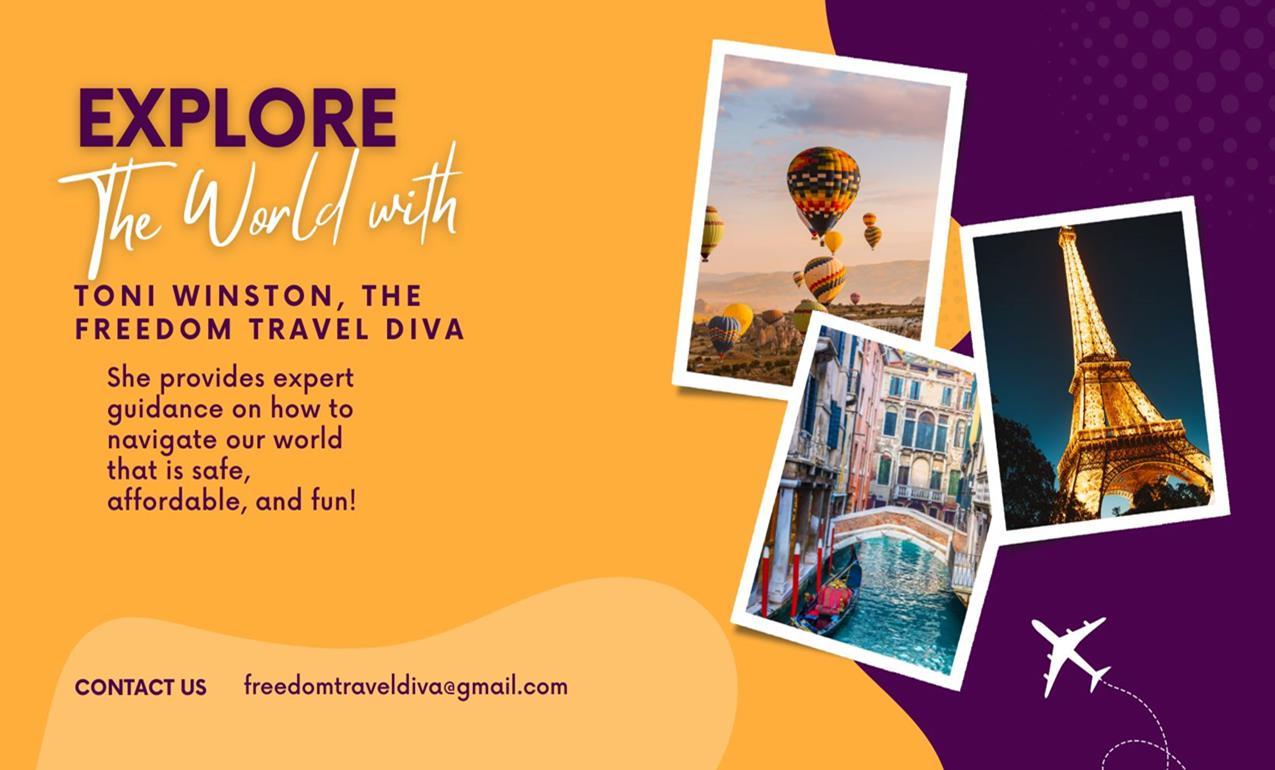
Out With the old, In With the…Better!
by Elizabeth Moliter

“Your old work isn’t better than your new work. And your new work isn’t better than your old. To assume there was a golden period and you’re past it is only true if you accept that premise. Putting your best effort in at each moment, in each chapter, is all we can ever hope to accomplish.” – Rick Rubin, The Creative
As we embark on a new year, I have been contemplating the phrase “out with the old, in with the new.” What does “newness” really mean in the context of living our best, most productive and satisfying lives? This brings out the question, “Is new always better?”
Let’s dig a bit deeper into these questions and maybe ask a few more!
First, is there value in exploring another kind of “new” that actually treasures the old, the learned, the regretted, the mistaken, and reshapes them into a different “new” that is at once powerful and even proud of the story we’ve already lived? A new that is ready to move into the future with determination, expectation, and promise? Yes, from my perspective, there is.
From a wide lens view, the story of our lives appears to be written as a nonfiction account of who we are as revealed by what we’ve done, with all the ebbs and flows of each passing year forming the narrative. As we’ve been told, we are the hero of our story, but we limit the progress we make when we decide that this must imply that there is an apex to our lives – a point at which the story’s climax plays out and we become our best selves, and then begin to decline or to leave the best part of our life story behind. Instead, why not mentally join the preceding years with the current and ensuing years in a way that can engage us to stimulate better stories, adventures, and improve our overall lives, the older we get.
Act
CHIC SAVANT 36
I embarked on a career in the business world and started a folk-rock band on the side which gave (and still gives) me joy. My professional career took off and I ultimately landed a leadership role in a non-profit organization. I also went back to school to earn a Master’s Degree in my 50s! It’s never too late!
And, yet, with these successes, I still always saw myself as something of a failure because I had not achieved my original “dream.”
It took some time to work through this nagging regret, but I ultimately realized that who I have become – and am still becoming – because of those earlier challenges and even the failures, has made me the woman I am today. Not just stronger because of adversity, but also more authentic and empathetic. I can relate more directly to others' challenges because of my own.
These past, present, and future experiences are forming a “new”and BETTER person – not held back by the past or daunted by the future but liberated by it. They serve as a springboard for my songwriting, a guide for my work as a coach and mentor, and as an anchor in my relationships.
I hope these ideas inspire you to enter the new year with gratitude and acceptance of the past, joy in the present, and expectation for the future!
If you have questions or would like to explore these ideas further, I can be reached at elizabeth@artofworkconsulting.com.
Elizabeth Moliter, MA, is a business consultant and coach, writer, and public speaker and is the Founder of Art of Work Consulting LLC. www.artofworkconsulting.com,
CHIC SAVANT 37

Women’s History Year-round!
By Sandra Wright, PhD
Women have contributed and accomplished so much but have been overlooked and consequently omitted from mainstream culture. In March, as we salute so many awesome women can help fill that void.
As Harriet Beecher Stowe said, “Women are the real architects of society”.
We honor such women as the prominent historical figure, Harriet Tubman. There have been many discussions and documentaries on this woman. Tubman was originally born Araminta Ross in Dorchester County, Maryland sometime in 1822. After subsequently escaping to Philadelphia, Pennsylvania in her late twenties and frequenting a few other locations following that, she always remained true to her roots. Tubman is most recognizable for her acts of securing justice for many enslaved by freeing over 70 enslaved individuals as a conductor on the Underground Railroad, and a hefty 700 more at the Combahee River Raid as a Union spy.
Then there is Dr. Ellen Ochoa the first female Hispanic astronaut. Over the course of four NASA flights, she logged more than 970 hours in space. In 2012, Ochoa was named the 11th director of the Johnson Space Center making her the first Hispanic and the second woman to serve in this position. She has also been recognized with NASA’s Distinguished Service Medal, Exceptional Service Medal, and Outstanding Leadership Medal.
There are so many women architects in our society. However, here are a few of these daring women who made their mark in society:
Nellie Bly (1864-1922) In 1886, 22-year-old Nelly Bly (born Elizabeth Cochrane New York City from Pennsylvania. Bly had gotten her start as a journalist when she penned an open letter to the editor of the Pittsburgh Dispatch which pointed out the paper’s negative representation of women. The editor not only read Bly’s response, he printed her rebuttal, and offered Bly a job as columnist
As a newspaper writer, she took the pen name Nellie Bly. Although, Bly was a popular columnist she was often asked to write pieces that only addressed women.
Ruby Bridges (1954- ) Ruby Bridges birth in 1954 coincided with the US Supreme Court’s landmark ruling in Brown v. the Board of Education of Topeka Kansas, which ended racial segregation in public schools. Nonetheless, southern states continued to resist integration, and in 1959, Ruby attended a segregated New Orleans kindergarten. A year later, however, a federal court ordered Louisiana to desegregate. The school district created entrance exams for African American students to see whether they could compete academically at the all-white school. Ruby and five other students passed the exam.
Dolores Huerta (1930-) was greatly influenced by her mother’s community activism and compassionate treatment of workers. She also experienced extreme discrimination that helped shape her view of the world. A schoolteacher, prejudiced against Hispanics, accused Huerta of cheating because her papers were too well-written. In 1945 at the end of World War II, white men brutally beat her brother for wearing a Zoot-Suit, a popular Latino fashion. These experiences as a child led her to want to help others experiencing the same discrimination. Huerta briefly taught school in the 1950s but seeing so many hungry farm children coming to school, she thought she could do more to help them by organizing farmers and farm workers.
Dr. Sandra Wright is the Editor-in-Chief of CHIC SAVANT
Reach her at:
info@sandracollinswright.com (404) 890-0028
CHIC SAVANT 39
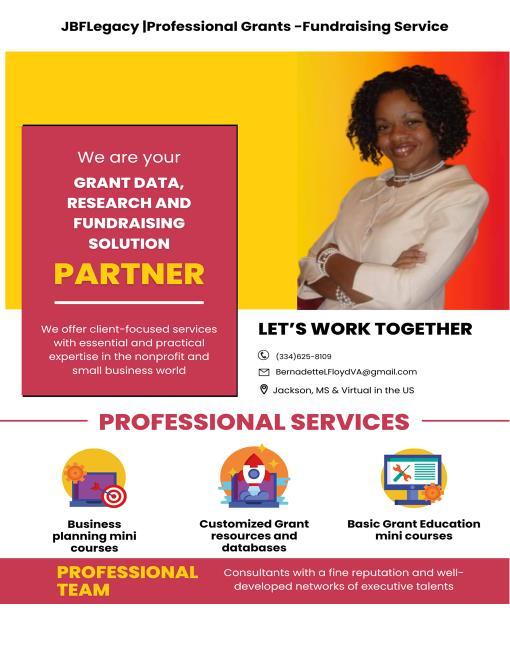


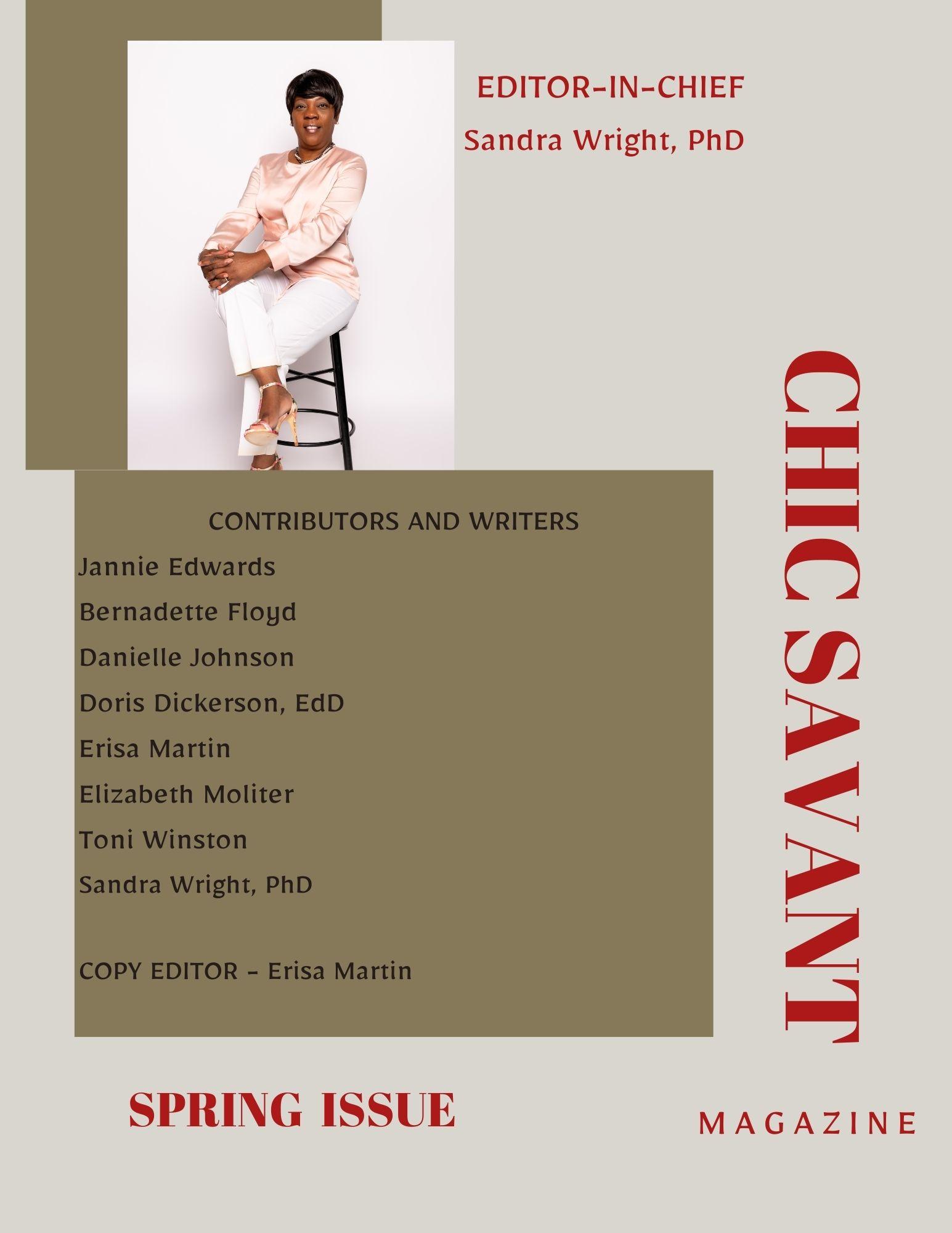






















 by Dr. Sandra Wright
by Dr. Sandra Wright



















